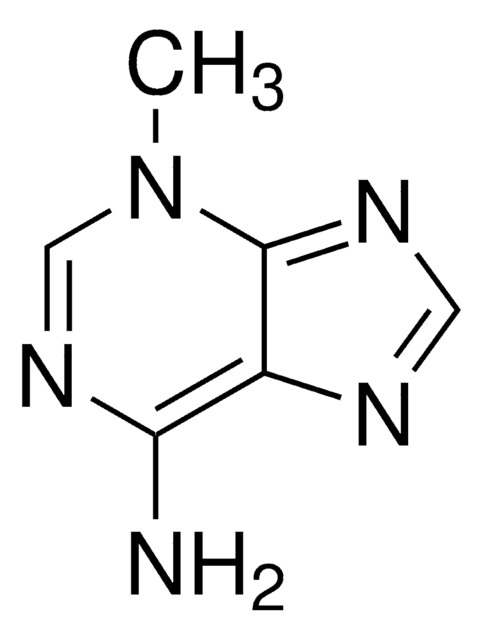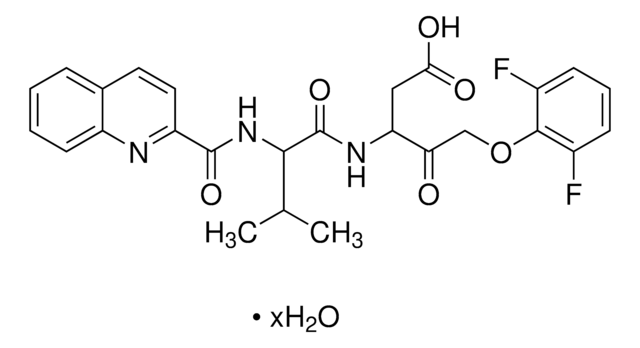SML0440
Spautin-1
≥98% (HPLC)
Sinónimos:
6-Fluoro-N-[(4-fluorophenyl)methyl]-4-quinazolinamine, C43
About This Item
Productos recomendados
Quality Level
assay
≥98% (HPLC)
form
powder
color
white to beige
solubility
DMSO: 15 mg/mL (clear solution)
storage temp.
2-8°C
SMILES string
FC1=CC=C(C=C1)CNC2=C3C=C(F)C=CC3=NC=N2
InChI
1S/C15H11F2N3/c16-11-3-1-10(2-4-11)8-18-15-13-7-12(17)5-6-14(13)19-9-20-15/h1-7,9H,8H2,(H,18,19,20)
InChI key
AWIVHRPYFSSVOG-UHFFFAOYSA-N
Application
- to study its effects on vascular, glial, and neuronal alterations in the oxygen-induced retinopathy mouse model
- to evaluate its pre-treatment effect on the response of canine osteosarcoma cells to doxorubicin
- to study its effects on the production of interleukin (IL)-6 by oxidatively stressed dendritic cells (OS-DCs) in Luminex assay
Biochem/physiol Actions
signalword
Danger
hcodes
Hazard Classifications
Acute Tox. 4 Oral - Eye Dam. 1
Storage Class
11 - Combustible Solids
wgk_germany
WGK 3
flash_point_f
Not applicable
flash_point_c
Not applicable
Elija entre una de las versiones más recientes:
Certificados de análisis (COA)
¿No ve la versión correcta?
Si necesita una versión concreta, puede buscar un certificado específico por el número de lote.
¿Ya tiene este producto?
Encuentre la documentación para los productos que ha comprado recientemente en la Biblioteca de documentos.
Los clientes también vieron
Nuestro equipo de científicos tiene experiencia en todas las áreas de investigación: Ciencias de la vida, Ciencia de los materiales, Síntesis química, Cromatografía, Analítica y muchas otras.
Póngase en contacto con el Servicio técnico















